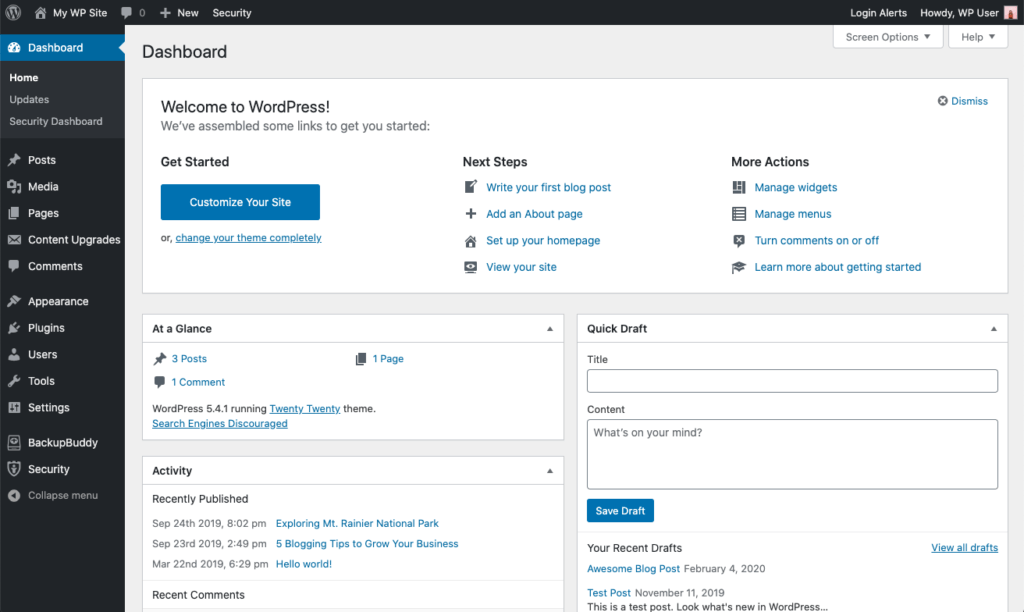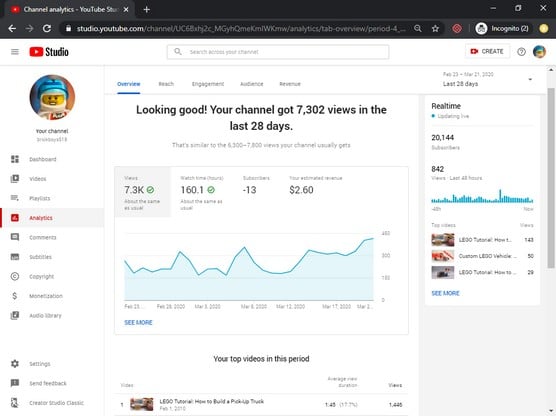Content. Marketing. Bring them both together and what do you have? Oh you better believe you've got some sweet, sweet content marketing.
Sadly though, as I've discussed in past articles, content marketing isn't like Mad Men anymore. For better or worse, you can't drink whisky in your office until you can't walk straight and then come up with a slogan that goes on to live in infamy. Pity.
These days, we need tools. Tech. Marketing tech, if you will, and there's a whole lot of tech in the world of content marketing. Another thing that gets said a million times in every martech article is that there are over 8000 marketing tools for you to choose from, and you need to make sure you choose right.
With that in mind, below is a list of the finest content marketing tools that you can employ the use of, divvied up into their respective categories...
Content Creation Tools
1. Adobe Photoshop
A few of these tools will speak for themselves. Everyone knows what Photoshop is and what it's capable of.
Visual marketing is some of the most important marketing you'll do, and it's photoshop that will allow you to create a genuine visual identity, add your own spin to generic stock images, and create logos and banners to promote your products and services.

2. Adobe Premiere Pro
More or less the be all and end all of any video-editing conversation. Teamed with Adobe After Effects (and someone that actually knows how to use them), then you more or less have the full suite that Hollywood uses to make blockbusters, and what any content marketer worth their salt uses to make engaging and effective content.
Like Photoshop, Premiere Pro has a number of deals available for personal use, students, businesses and more, with Adobe Suite also being an option to have the whole set of tools in one subscription.
Warning: it can take time for beginners to learn how to use these tools to their potential.
3. Canva
Photoshop for people who don't want to pay for Photoshop and don't believe that they'll ever get the hang of it. On a personal note, I love Photoshop, but Canva is useful if you want to make a quick infographic or graph from a template, with lots of lovely customisation.
Canva has emerged as a major competitor in the market, thanks to its ease of use for non-designers, and the quality of its free version, as evidenced by its recent funding round which valued the company at $40bn.
4. Audacity
What do we have here then? I'll tell you what we have; a very intuitive and easy-to-use audio editing tool.
Podcasters all over the world use this one, regardless of how experienced or professional they are. It's simply a really good tool for editing audio, whether that's musical, informative, or literally any other genre. Best of all, it's about as free as anything comes!

5. GarageBand
GarageBand is a gorgeous bit of kit that basically does everything you could need and rather wonderfully, it's free free free.
However, you can only get GarageBand on Apple Products, such as iPad, iPhones and Macintosh computers.
Bet it's been a while since you heard anyone call a Mac a Macintosh, eh?
Content Publishing Tools
1. HubSpot
Lovely HubSpot. Ol' reliable. That's what I'm using right now, as a matter of fact.
You'll probably all have some idea of this, but HubSpot very much does it all. From automated emails to website/blog posting to social media cross-compatibility. If you've got HubSpot on your side, you've got a fighting chance of making a dent in the online content stratosphere.
HubSpot also happen to have a lot of wonderful and very useful measurement tools, but we'll talk about those more later. It also offer chatbots and Live Chat, which is cool.
2. WordPress
Ah my first introduction into online content writing on a professional basis. I like WordPress a lot, even if it is a little flawed.
Essentially, WordPress is HubSpot lite. It does almost all of the things that HubSpot does, but you can never really escape the whole "personal blog" vibe when you're using it.

Nonetheless, WordPress is the most widely used CMS in the world and powers roughly 30% of the internet. The New Yorker uses it, after all. None of this should come as a surprise, though, as it offers full customisation on a template level, or plugin architecture for your websites.
3. Instagram
Yes you can publish to Instagram straight from your CMS but, obviously, Instagram is such a visual platform that it really helps to do things manually on there.
Not that, as a business, you should really be adding filters onto your images after you've had them approved for use, but it helps to compare and contrast with old posts and even other trending posts that have shown up on your feed.
Also, I did say that this section of the list was just for publishing, but Instagram Explore is a great way to see what is popular and trending in your sector.
4. YouTube
Similar to Instagram, YouTube is another platform that you really want to post manually on. Just in case you're thinking YouTube might be falling behind all of the other social channels that you can pot videos on, here's some stats...
- YouTube has more than 2 billion monthly active users.
- YouTube is the second most popular website in the world, after Google.
- According to Social Media Examiner’s 2020 industry report, YouTube is used by 55% of marketers, making it the most used video channel for video marketing.

- People watch more than 1 billion hours of YouTube video content each day.
It's a very important content publishing tool.
5. Hootsuite
Like I said, there are plenty of CMS that allow you to publish across all sort of social media channels, and Hootsuite is one of those.
Combining all of the scheduling tools from the likes of Twitter and Facebook and Instagram and LinkedIn and more, it also rather brilliantly combines all of the analytical tools from those very same platforms.
A free plan will allow you to schedule up to 30 messages at a time and link up to three social media profiles. Plans can get pretty expensive after that, but they all serve their purpose.
Content Measurement Tools
1. Google Trends
More of an external analytics tool, rather than a personal optics tool, Google Trends is still very huge.
It offers users the chance the see what is trending all over the world, what people are searching for most, what pages are performing best and all of this can be refined down to very specific parameters and places in the world.
2. Google Analytics
Definitely the most used (and by proxy most well-known) analytics tools out there. The daddy, if you will. You probably shouldn't, though.

Google Analytics is wonderful and one of the many, many, many strings to the Google bow, which more or less all falls under the Google Workspace moniker. Teamed with YouTube and the next tool on this list, they really are very unstoppable.
With Google Analytics, you can measure campaign success, see what people are searching on your site, and determine your highest performing content, along with much much more.
3. BuzzSumo
BuzzSumo is not at all different Google Trends, but it's a tiny bit more sophisticated. It can be used to find relevant content, come up with ideas, mitigate risk, spot global opportunities, monitor your competitors and the general industry, as well as topics, people and keywords.
It's really great and honestly, on a personal note, you get a little bit of a kick when you see your own content on there.
4. Hotjar
As Hotjar puts it, this is the “fast and visual way to understand your users.” Sounds useful, right? Well, there's a good reason for that: it is.
You can actually see how your consumers are visiting your site and get genuine, instant feedback. It's one of those tools that you can find yourself getting lost watching. Numbers going up and down... it's cathartic.
Handily, Hotjar can also offer you the chance to send your users polls and surveys in order to see what they think of your service.
5. SpyFu
SpyFu is mainly for SEO, but it's still great for general optics and increasing one's marketing ROI.

You can actually look into your competitors old marketing strategies with this, as well as PPC and SEO SERP analysis.
You can get almost all of the perks in this one for free, but there are plans to go up to around $200-a-month.
Naturally, there's a lot of crossover here. As with most good platforms like HubSpot or WordPress, they have native ROI measurement tools that are very very very good in their own right.
It's fair to say that HubSpot probably edges WordPress in that category, but you shouldn't turn your nose up at well integrated secondary or tertiary tools.
